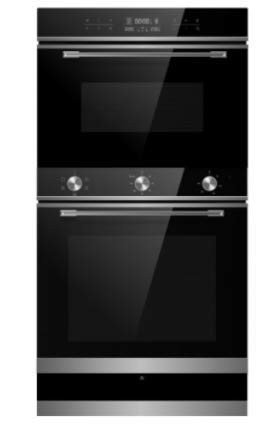Understanding Ovens and Hobs: A Comprehensive Guide
When it concerns cooking home appliances, ovens and hobs are among the most important tools found in contemporary kitchens. They play critical roles in meal preparation, changing raw components into scrumptious meals. Comprehending the differences in between numerous types of ovens and hobs and how to select the right one can make a considerable difference in cooking efficiency and food quality.
This article checks out ovens and hobs in information, offering insights into their types, features, advantages, and typical FAQs. Whether you are an experienced chef or a novice cook, this information will help you make informed decisions for your cooking requirements.
Kinds of Ovens
Ovens are available in several types, each developed for specific cooking methods and styles. Here is a detailed take a look at the most typical kinds of ovens:
| Type of Oven | Description | Best For |
|---|---|---|
| Traditional Oven | Makes use of heating components situated at the top and bottom for even cooking. | Baking, roasting, and basic cooking |
| Convection Oven | Features a fan that flows hot air for quick and even cooking. | Baking pastries and cookies, roasting meats |
| Steam Oven | Utilizes steam to prepare food, preserving wetness and nutrients. | Vegetables and fish |
| Microwave Oven | Quickly cooks food using microwave radiation. | Reheating and fast meals |
| Wall Oven | Built straight into the wall for space-saving cooking services. | Little cooking areas and contemporary designs |
| Skill Level | Offers multiple cooking modes including baking, broiling, and toasting. | Flexible cooking requires |
Kinds of Hobs
Hobs, also referred to as cooktops, been available in numerous types based upon their fuel source and design. Comprehending these alternatives can help in discovering the best fit for your kitchen setup:
| Type of Hob | Description | Best For |
|---|---|---|
| Gas Hob | Utilizes gas flames for cooking, offering immediate heat control. | Traditional cooking methods |
| Electric Hob | Utilizes electric coils or induction elements to heat pots and pans. | Even heat circulation |
| Induction Hob | Uses electro-magnetic energy to directly warm pots, offering fast and effective cooking. | Energy-efficient cooking |
| Solid Plate Hob | A kind of electric hob with strong plates that takes some time to heat up however retains heat well. | Sluggish cooking |
| Ceramic Hob | Functions a glass-ceramic surface enabling easy cleaning, with electric heating aspects listed below. | Visual appeal |
Elements to Consider When Choosing an Oven and Hob
Choosing the right oven and hob combination requires careful consideration of several aspects. Below is a list of essential aspects to bear in mind:
Cooking Style
- Are you an everyday cook or an occasional baker?
- Do you choose steaming or frying?
Kitchen Size
- What area is available in your kitchen for the home appliances?
- Will you require built-in or freestanding designs?
Fuel Source
- Do you have access to gas, or would you choose electric?
- Are you interested in induction cooking technology?
Spending plan
- What is your budget for purchasing an oven and hob?
- Are you considering a high-end model or a more budget friendly option?
Energy Efficiency
- Are you seeking to lower your energy usage?
- Do you prefer appliances that include high-efficiency scores?
Advantages of Ovens and Hobs
Both ovens and hobs bring unique advantages to the kitchen. Here's a summary of some benefits:
Ovens:
- Versatility: Able to handle a vast array of cooking methods from baking to roasting and broiling.
- Constant Results: Even heat distribution offers trustworthy cooking results.
- Big Capacity: Ideal for big meals and batch cooking.
Hobs:
- Control: Gas hobs offer immediate heat changes, useful for accurate cooking.
- Efficiency: Induction hobs are understood for their quicker heat-up times and energy performance.
- Independent Cooking: Multiple hobs enable for cooking a number of dishes simultaneously.
Picking the ideal ovens and hobs is important for anybody looking to enhance their cooking abilities and kitchen effectiveness. By comprehending the different kinds of each home appliance, alongside their benefits and functions, customers can make educated choices that deal with their cooking routines and preferences.
As cooking areas evolve, so do the innovations surrounding cooking devices. Buying the ideal mix of an oven and hob can result in much better cooking experiences, higher food quality, and even enjoyable time invested in the kitchen.
Often Asked Questions (FAQs)
What is the difference between convection and standard ovens?
- A convection oven utilizes a fan to flow air for even cooking, while a traditional oven relies just on top and bottom heating elements.
How do induction hobs work?
- Induction hobs use electro-magnetic fields to straight warm pots and pans made of magnetic products, causing quicker cooking times and more energy effectiveness.
Are gas hobs much safer than electric hobs?
- Safety depends upon use and installation. Uk Ovens For Sale need correct ventilation and can present a fire danger, while electric hobs may pose dangers of burns due to their hot surfaces.
Can I bake in a steam oven?
- Yes, a steam oven can be used for baking, typically resulting in moister and fluffier baked goods, particularly breads and pastries.
What should I search for in a built-in oven?
- Search for functions like capacity, cooking modes, energy effectiveness ratings, and ease of cleansing.
By considering the info and guides supplied in this short article, readers can easily navigate the world of ovens and hobs, ensuring that they choose the very best devices to match their cooking requirements.

